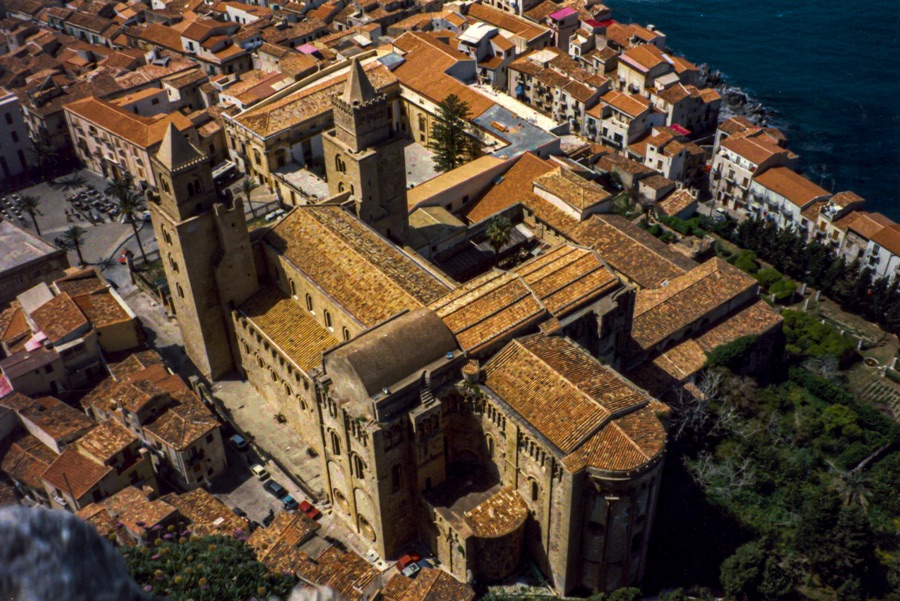The cloister of Cefalù’s Basilica of the Transfiguration is the central nucleus of that vast collection of buildings that make up the conventual complex, erected next to the Cathedral. Over the centuries, there haven’t been any documents able to give us a precise construction date, so studies are still open.
Over the centuries, there haven’t been any documents able to give us a precise construction date, so studies are still open.
In order to reconstruct the enigmatic story of the construction of the cloister and understand the dynamics of its current location, at a level of about three metres, considerably lower than the level of the naves of the adjacent church, it is necessary to reflect on the data that emerged from the recent restoration work, which has allowed us to formulate some hypotheses. The Cloister is located next to the wall of the Cathedral’s northern
aisle
, and therefore in a non-canonical position in relation to the Orthodox layout of the monastic complexes, which places it next to the wall of the church’s southern aisle. It should be remembered that the Cefalù cathedral church was built at the behest of Roger II, as a dedicatory temple and royal mausoleum. However, the grandiose and majestic building project, launched by the sovereign, was only completed after about two hundred years, interrupted by the completion of the
apses
, the
presbytery
and the
transept
.
The cathedral was completed after a long standstill with the creation of the naves and the modification of the original architectural layout. Entrance to the cloister was gained through the regular door in the western wall of the transept, with access to the eastern aisle and the anti-clockwise route along the aisles.
The cloister is delimited, to the south, by the north aisle of the church and surrounded, to the east and west, by the conventual buildings with the canonical spaces of the Abbey: the chapter house, the refectory, the dormitory; while to the north, on the sea front, it is not unlikely that the cloister aisle could have remained in some way open to the horizon, a unique feature found in the
cloister of the Benedictine Mont-Saint-Michel Abbey
.